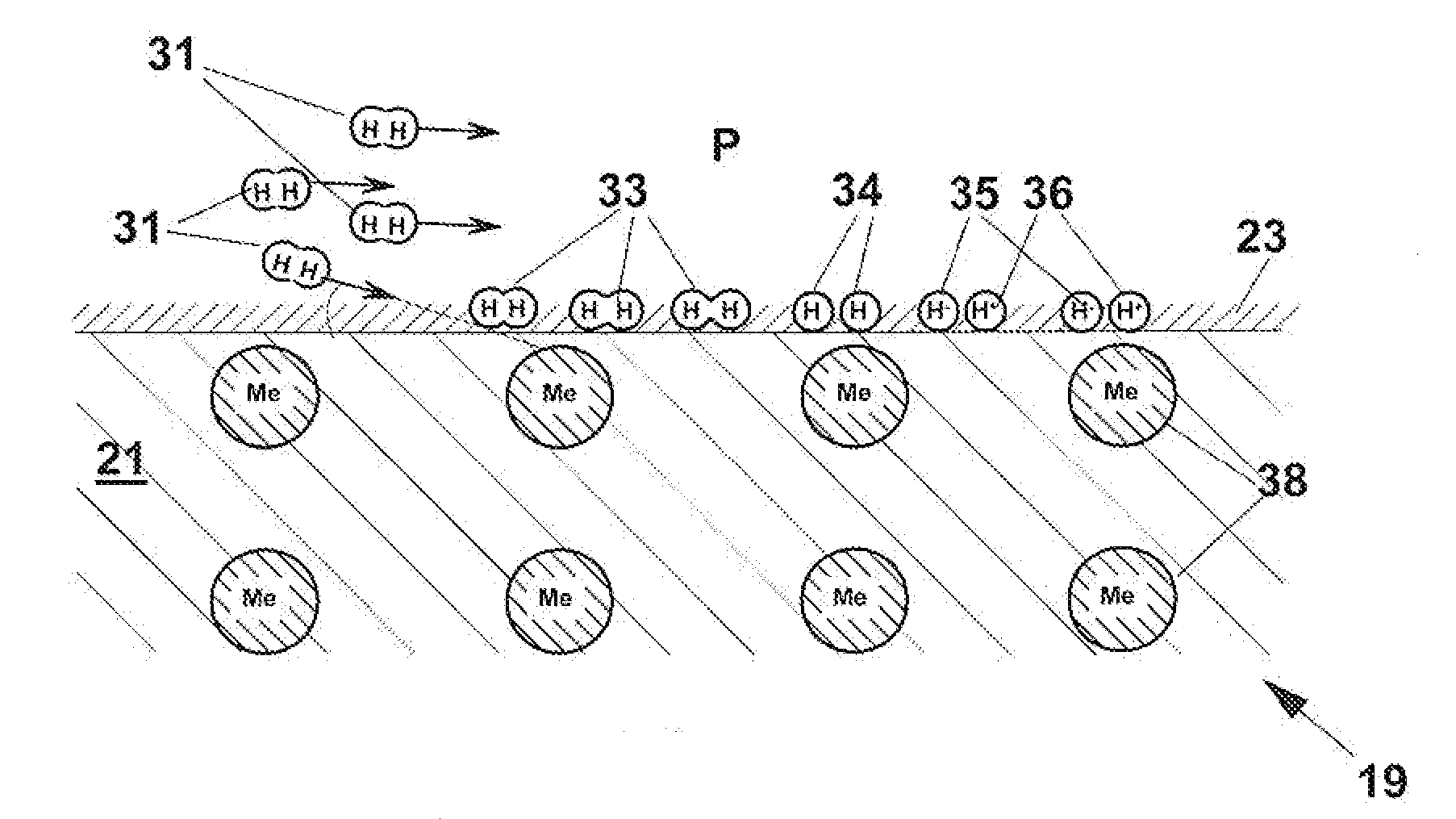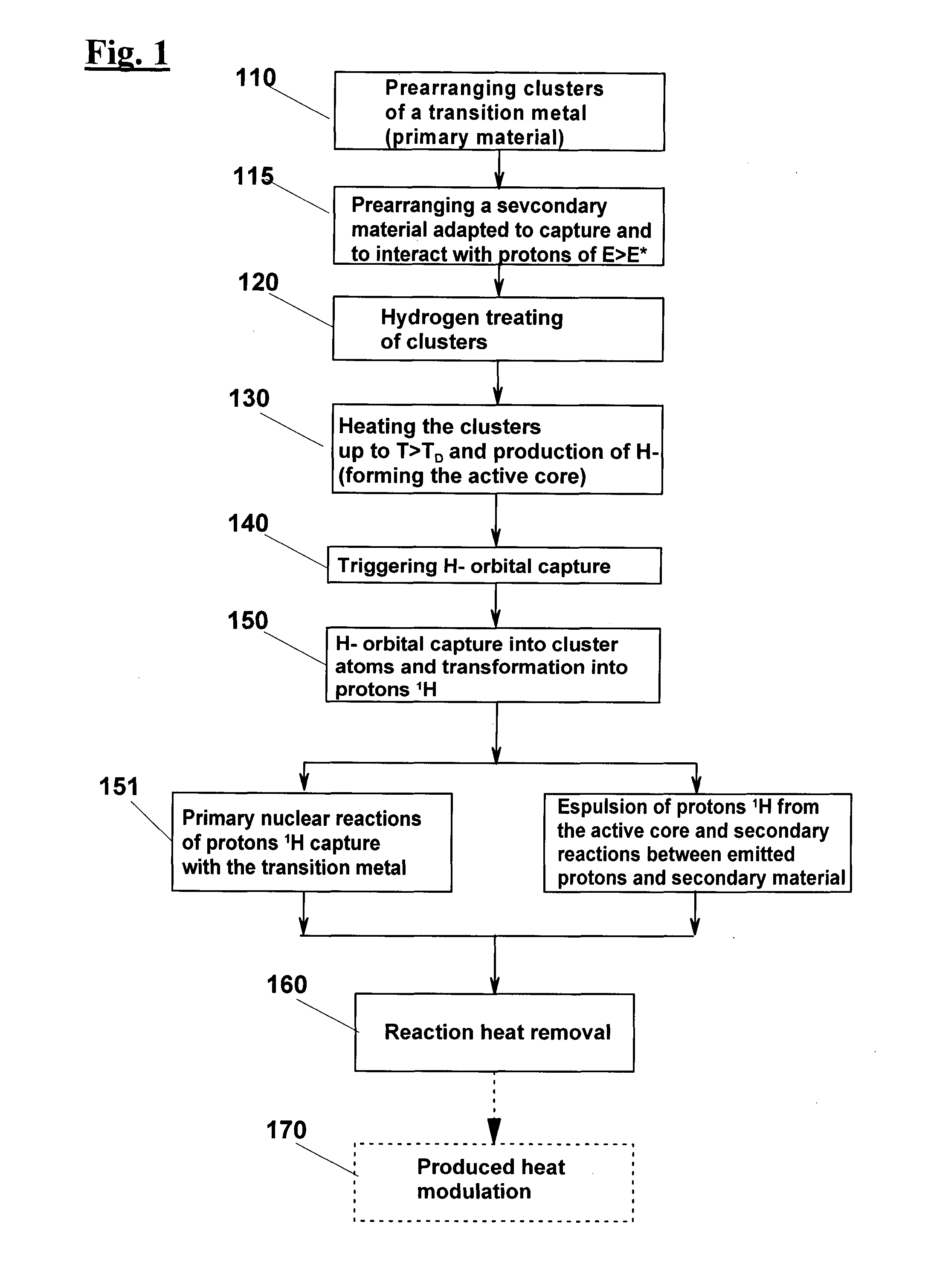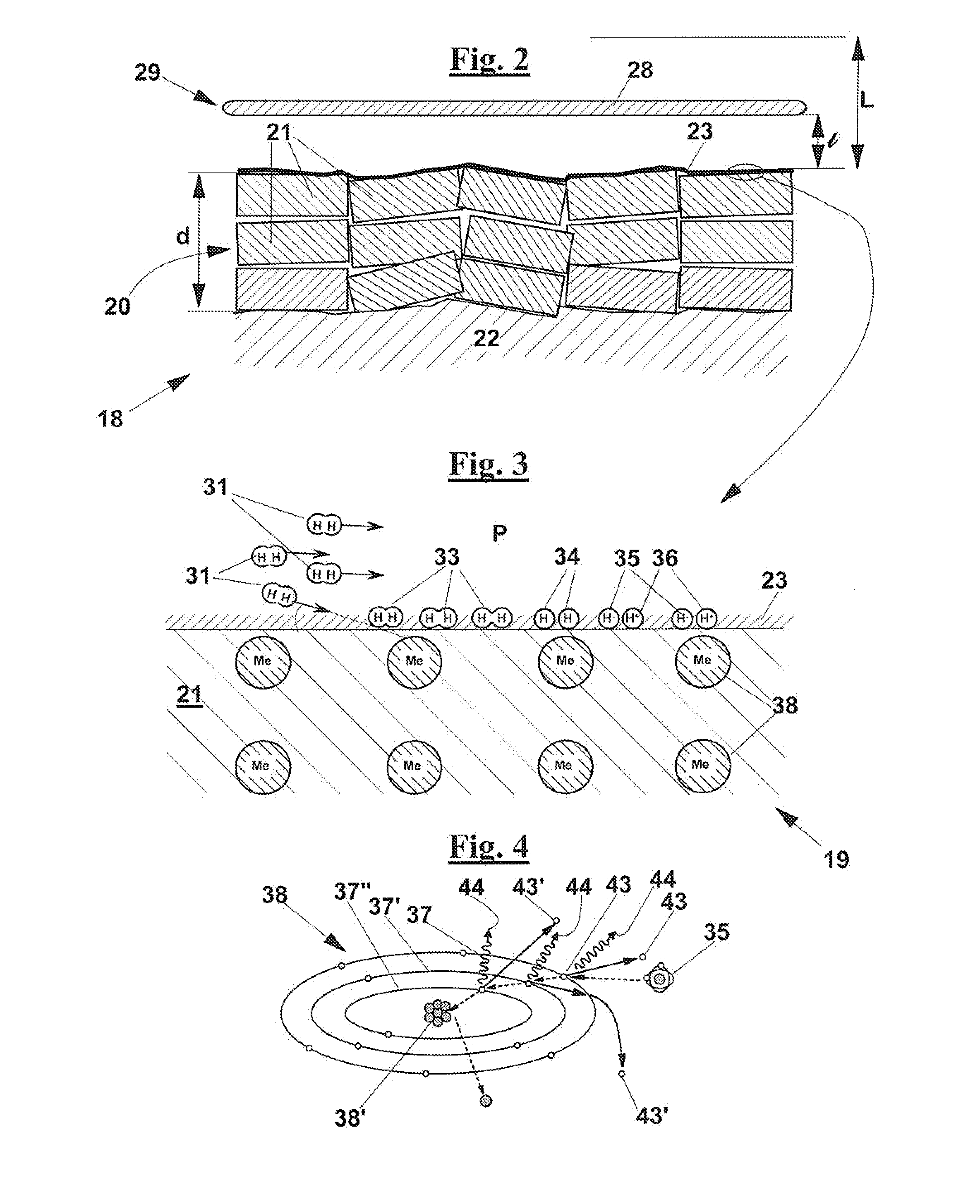Method and apparatus for generating energy by nuclear reactions of hydrogen adsorbed by orbital capture on a nanocrystalline structure of a metal
- Summary
- Abstract
- Description
- Claims
- Application Information
AI Technical Summary
Benefits of technology
Problems solved by technology
Method used
Image
Examples
Embodiment Construction
[0124]With reference to FIGS. 1, 2 and 3, a method is described, according to an exemplary embodiment of the invention, to obtain energy by a sequence of nuclear reactions between hydrogen 31 and a transition metal 19 (FIG. 2). According to this exemplary embodiment, the method provides a step 110 (FIG. 1) of prearranging a primary material 19 that comprises a predetermined amount of micro-nanometric clusters 21 of a transition metal (FIG. 2). In an exemplary embodiment, the clusters 21 form a layer 20 that is arranged on a substrate 22 and is limited by an interface surface 23. Together with substrate 22, layer 20 of clusters 21 forms an active core 18. The thickness d of crystal layer 20 is preferably set between 1 nanometer and 1 micron.
[0125]In order to be clusters, crystals 21 must comprise a number of atoms of the transition metal lower than a predetermined critical number, above which the crystals lose the cluster features. In the case of a material deposited on a substrate 2...
PUM
 Login to View More
Login to View More Abstract
Description
Claims
Application Information
 Login to View More
Login to View More - R&D
- Intellectual Property
- Life Sciences
- Materials
- Tech Scout
- Unparalleled Data Quality
- Higher Quality Content
- 60% Fewer Hallucinations
Browse by: Latest US Patents, China's latest patents, Technical Efficacy Thesaurus, Application Domain, Technology Topic, Popular Technical Reports.
© 2025 PatSnap. All rights reserved.Legal|Privacy policy|Modern Slavery Act Transparency Statement|Sitemap|About US| Contact US: help@patsnap.com



